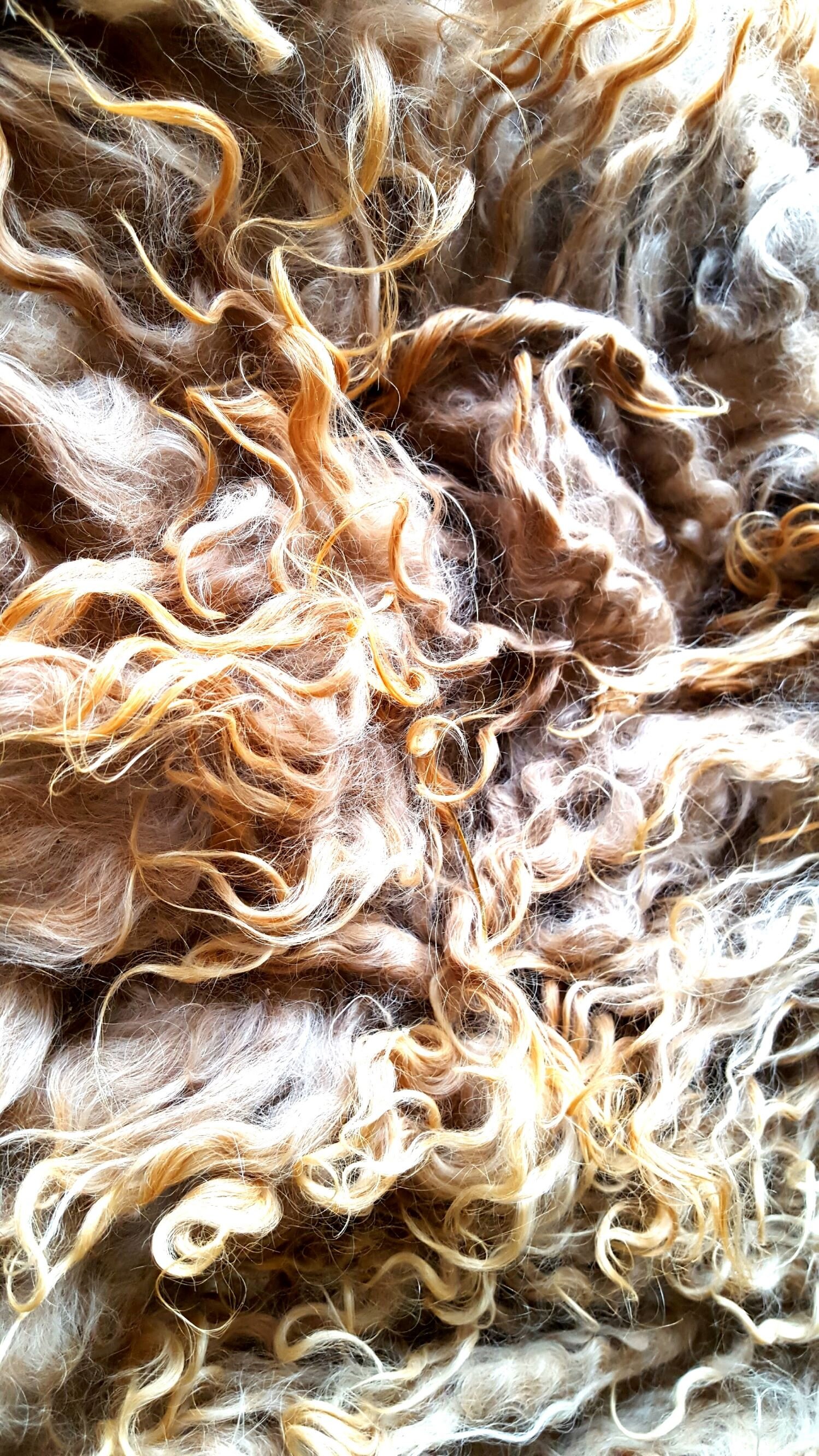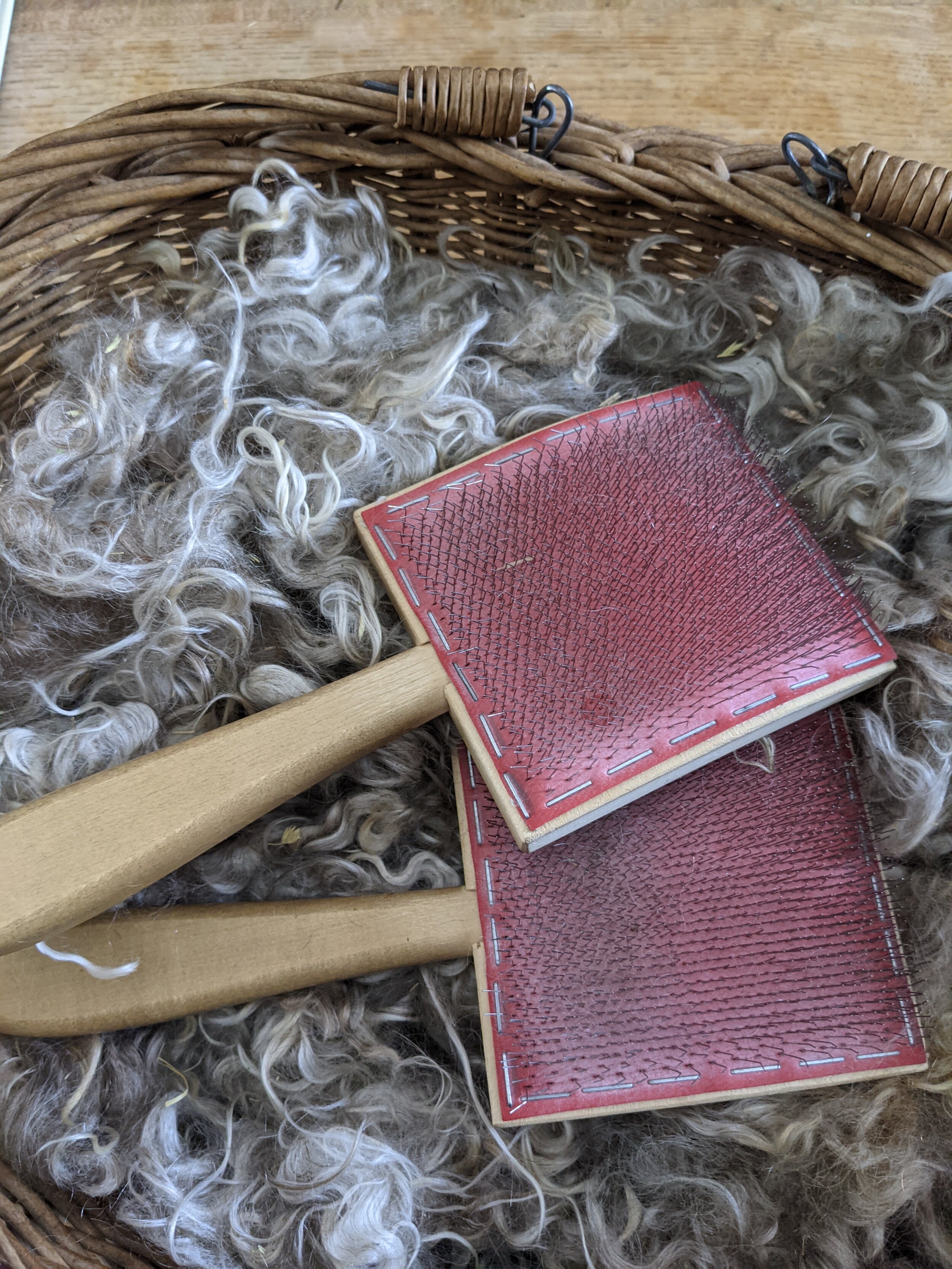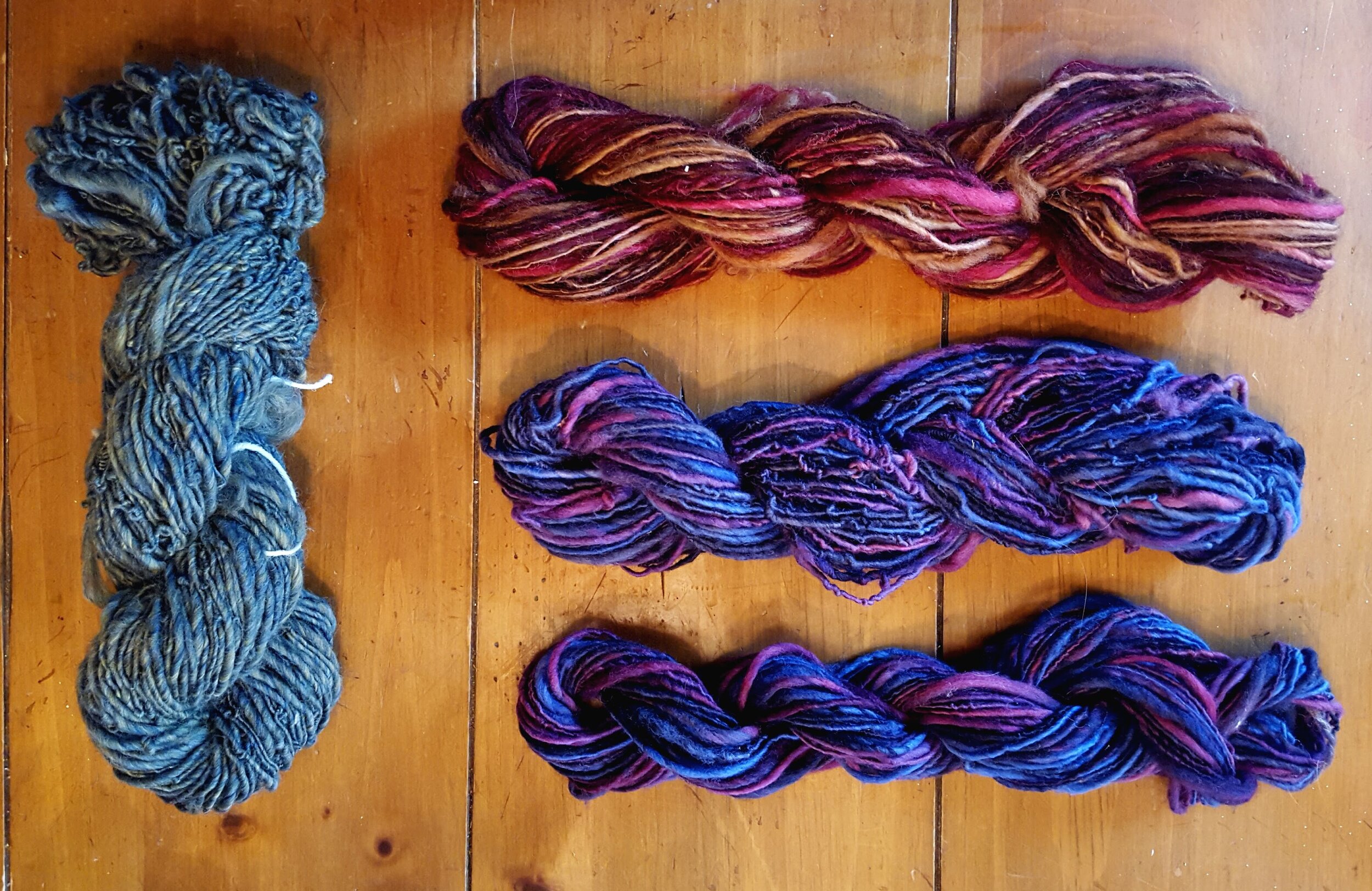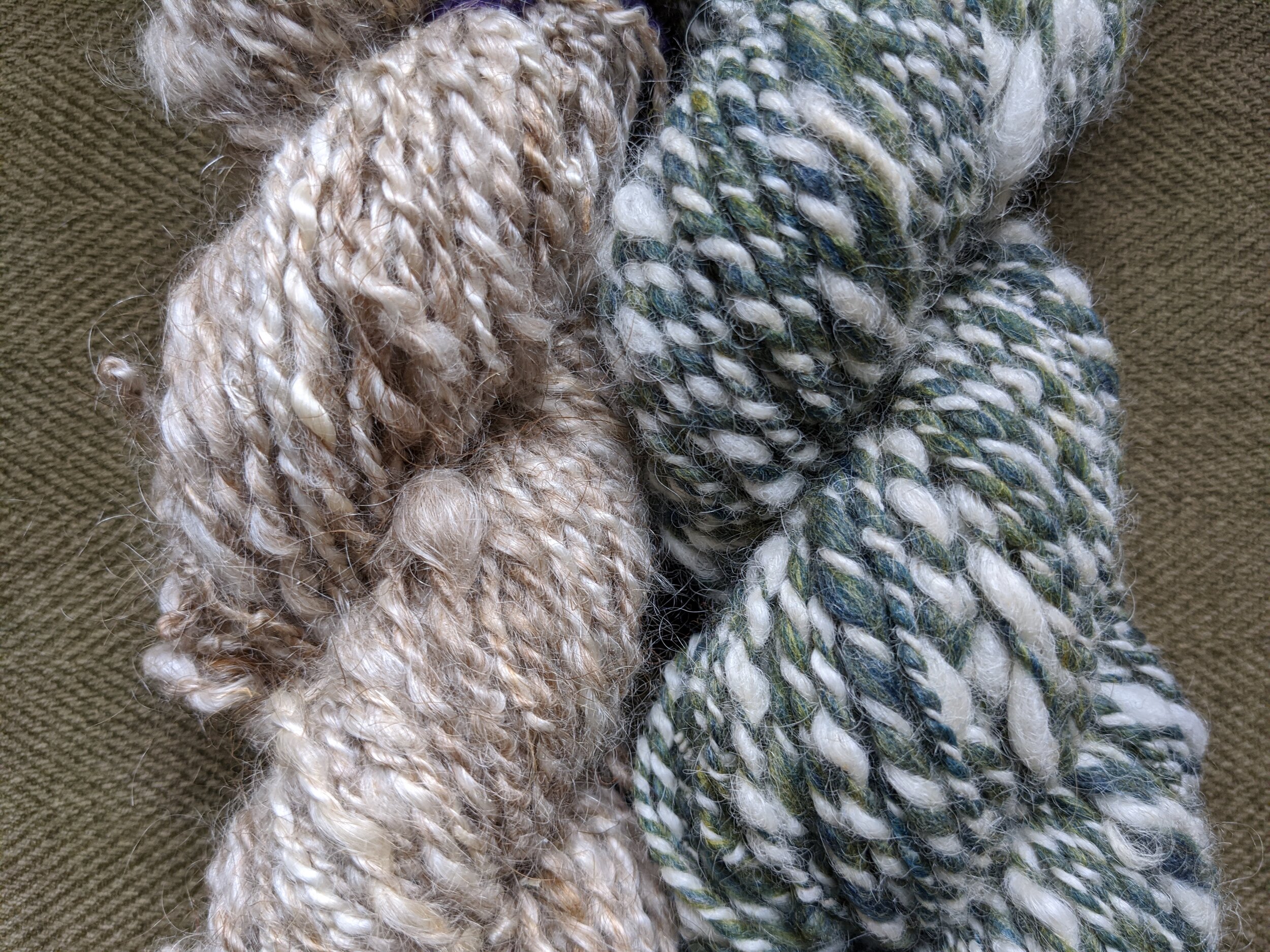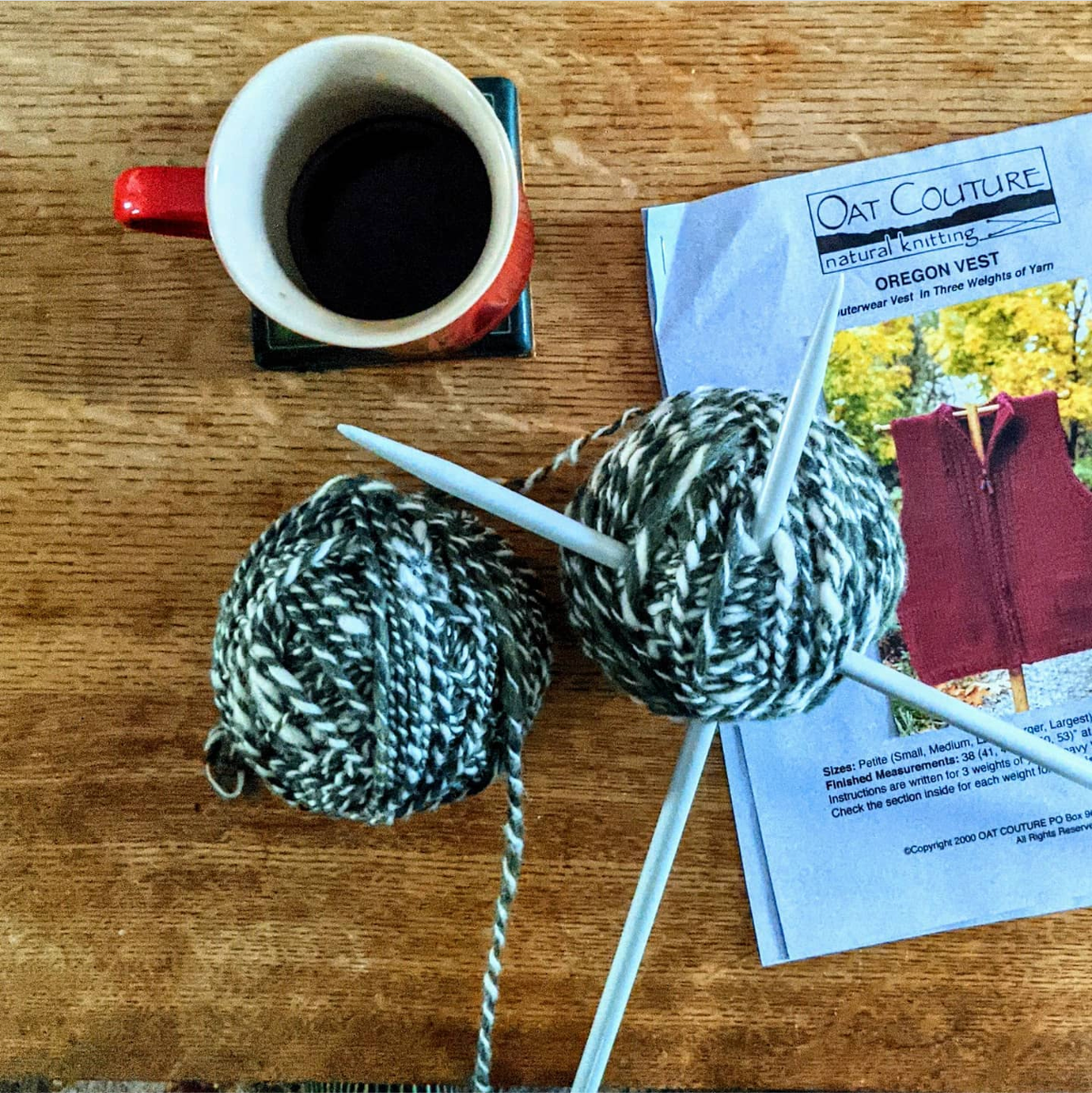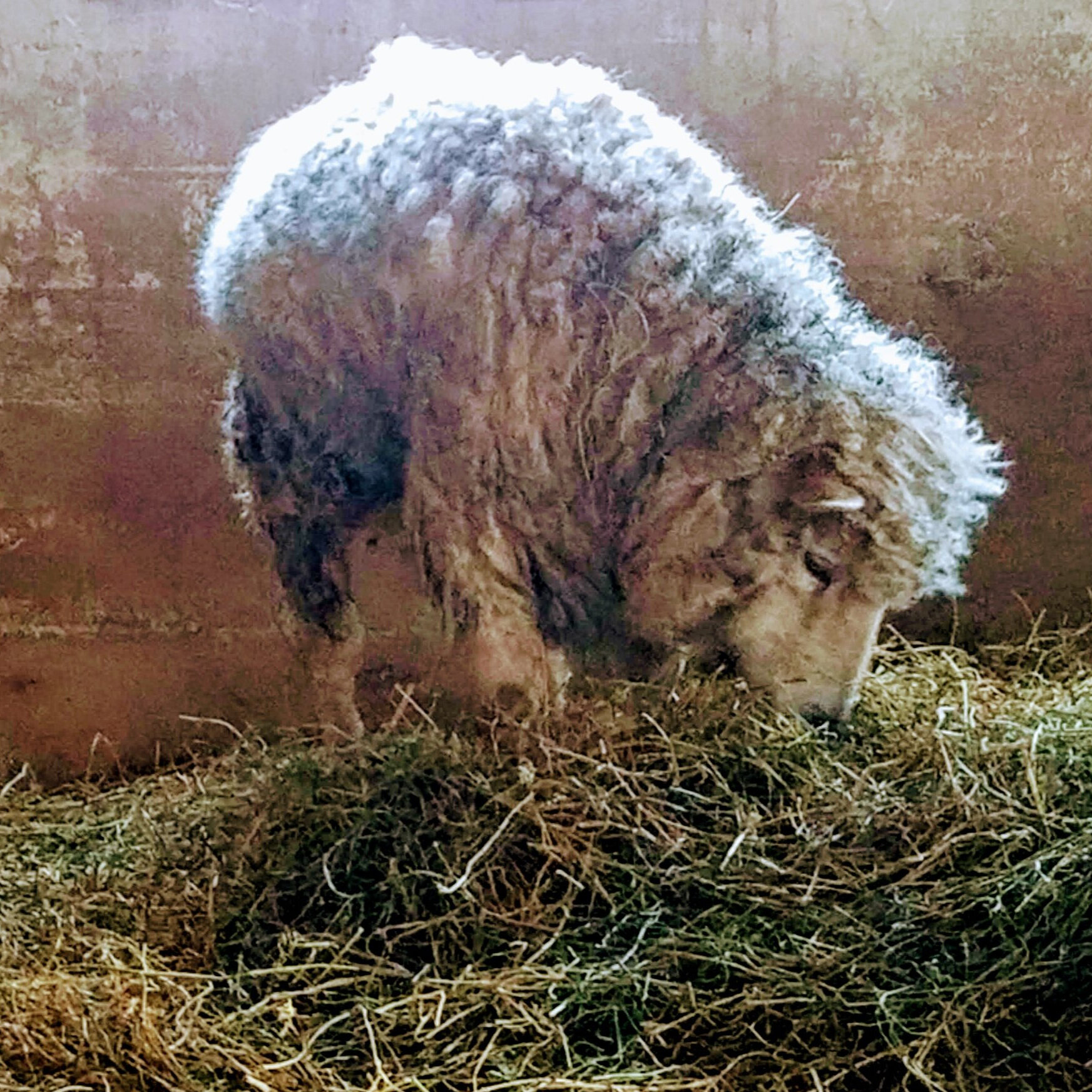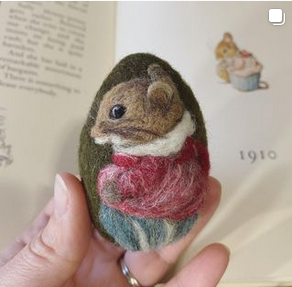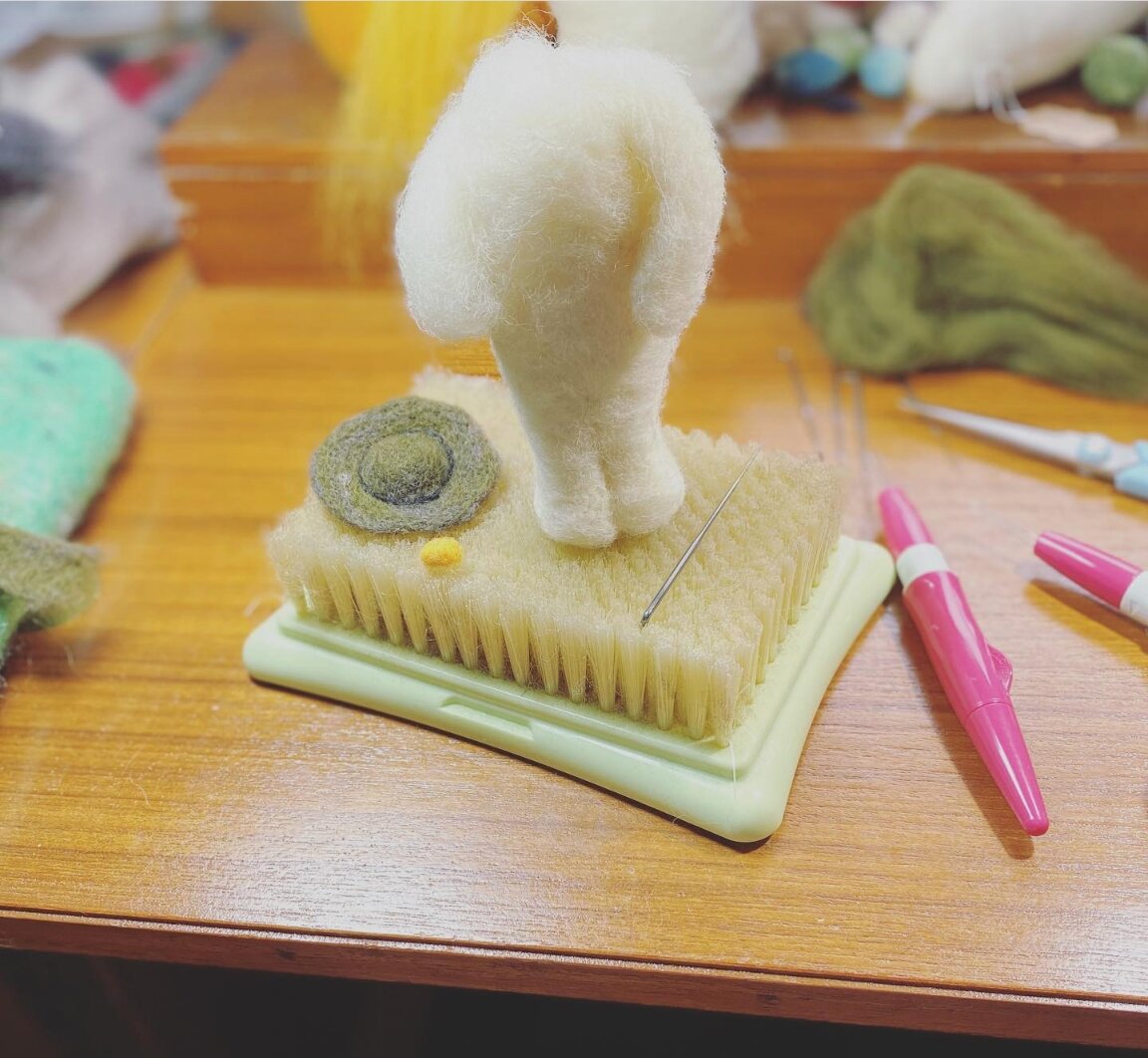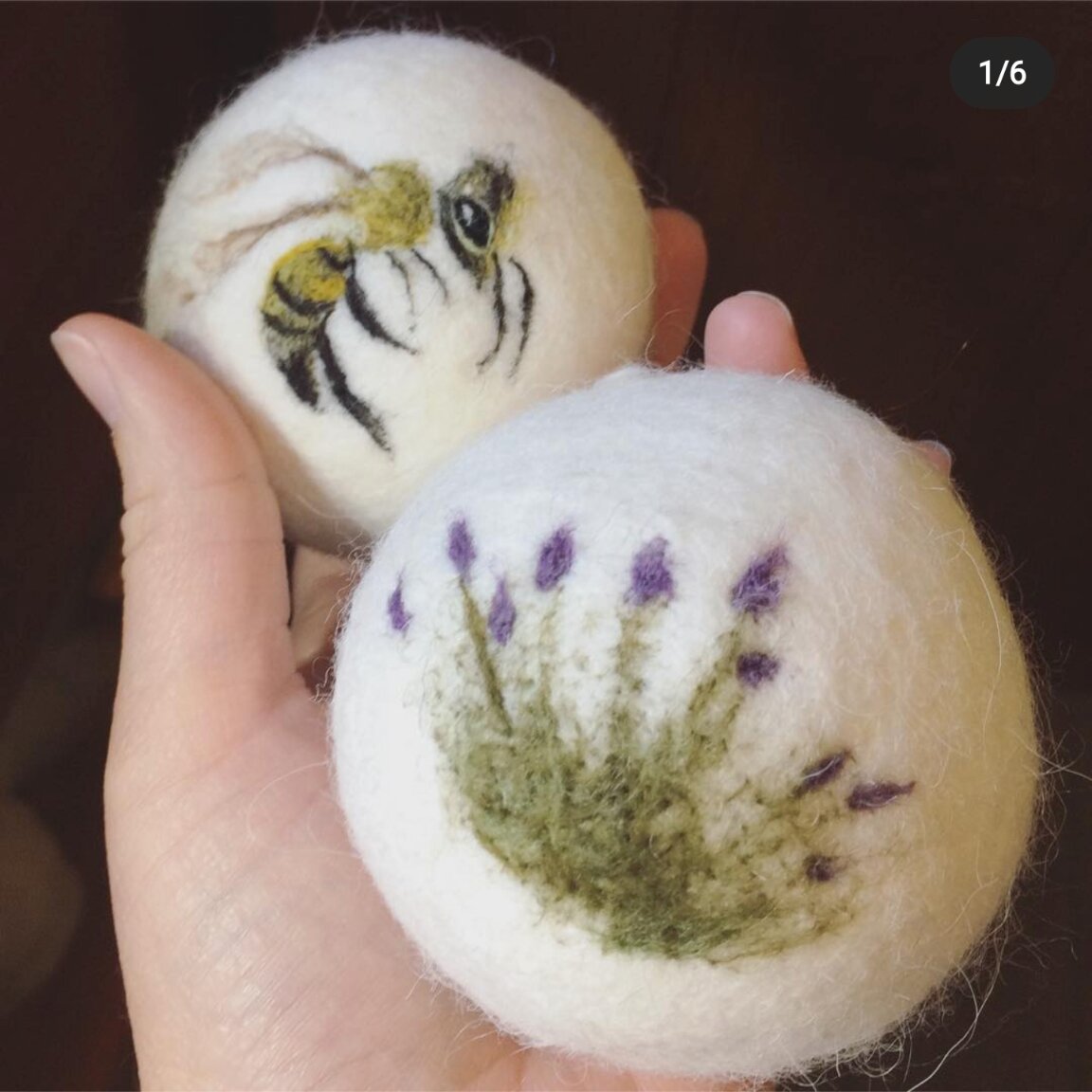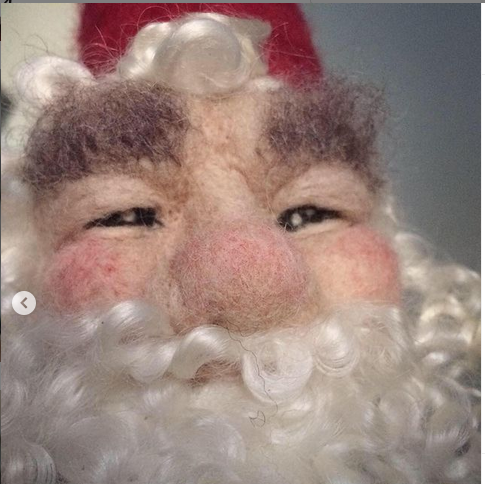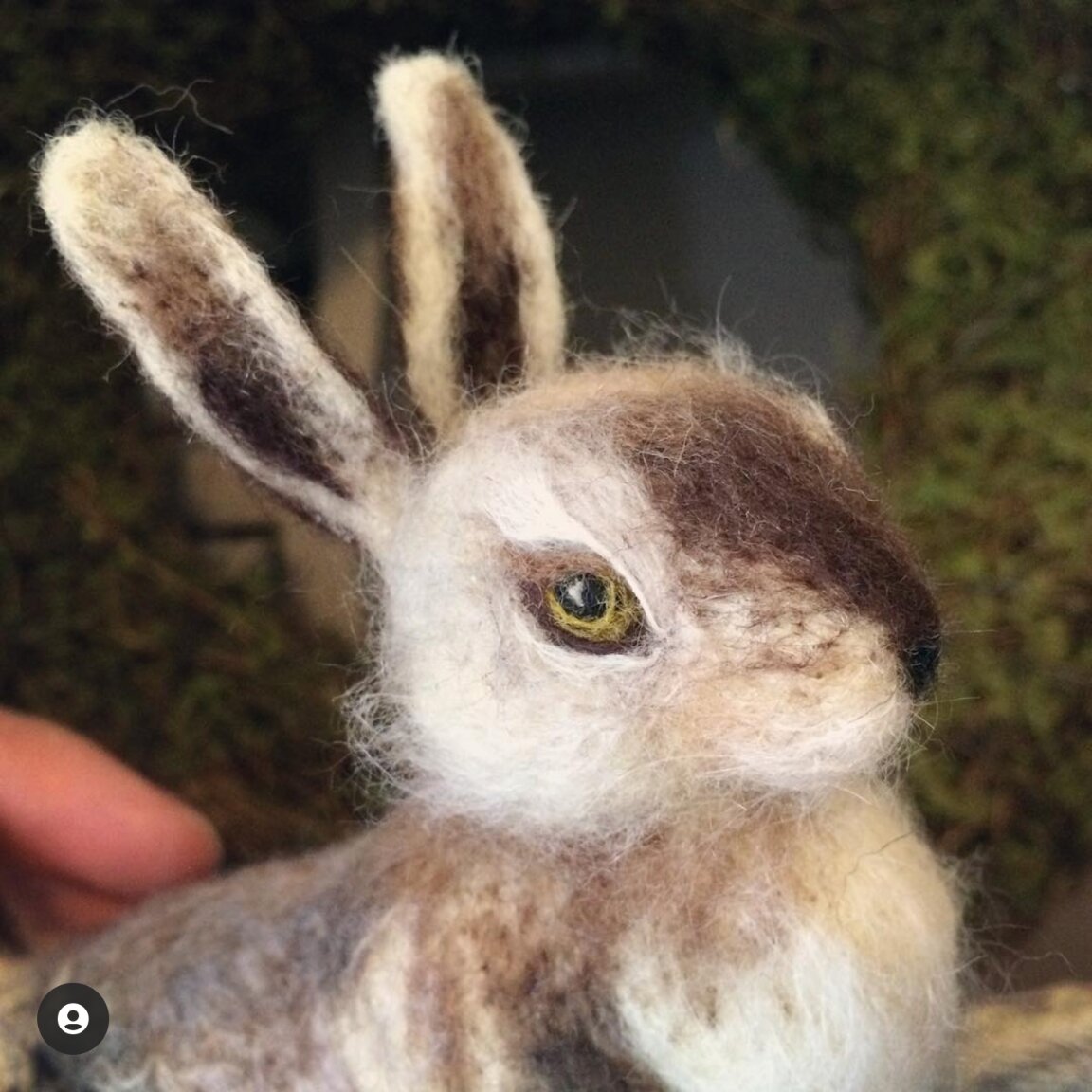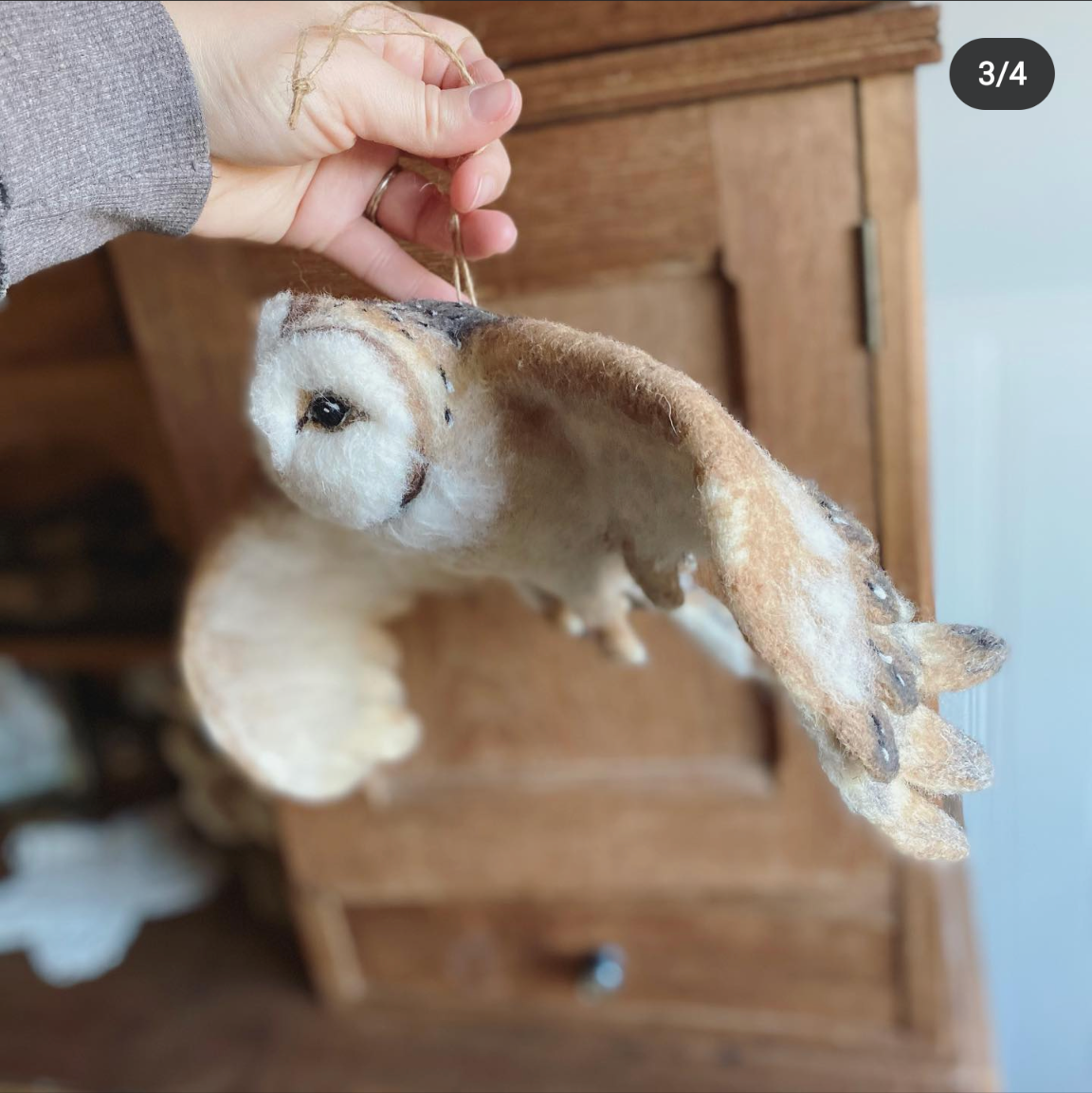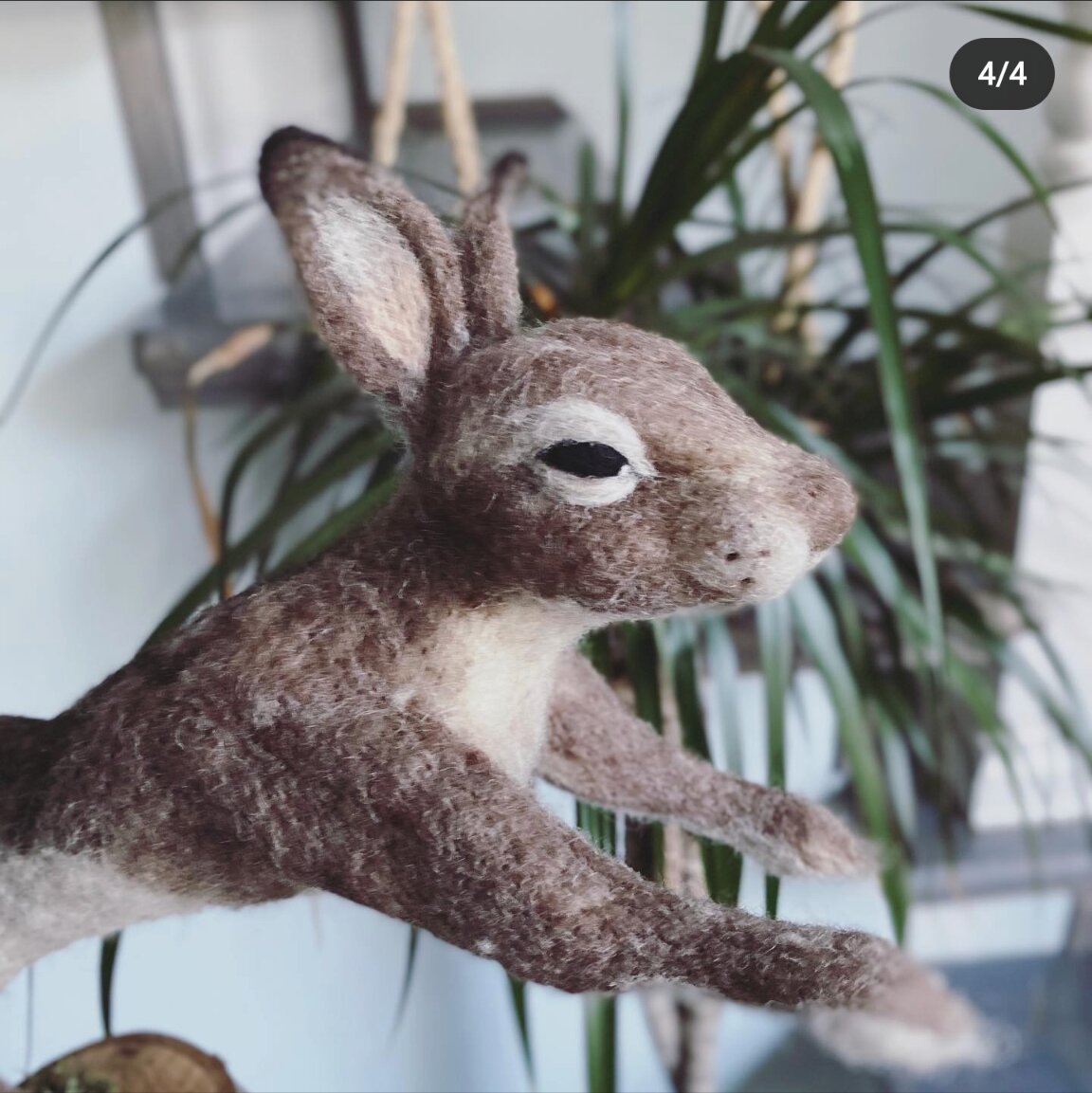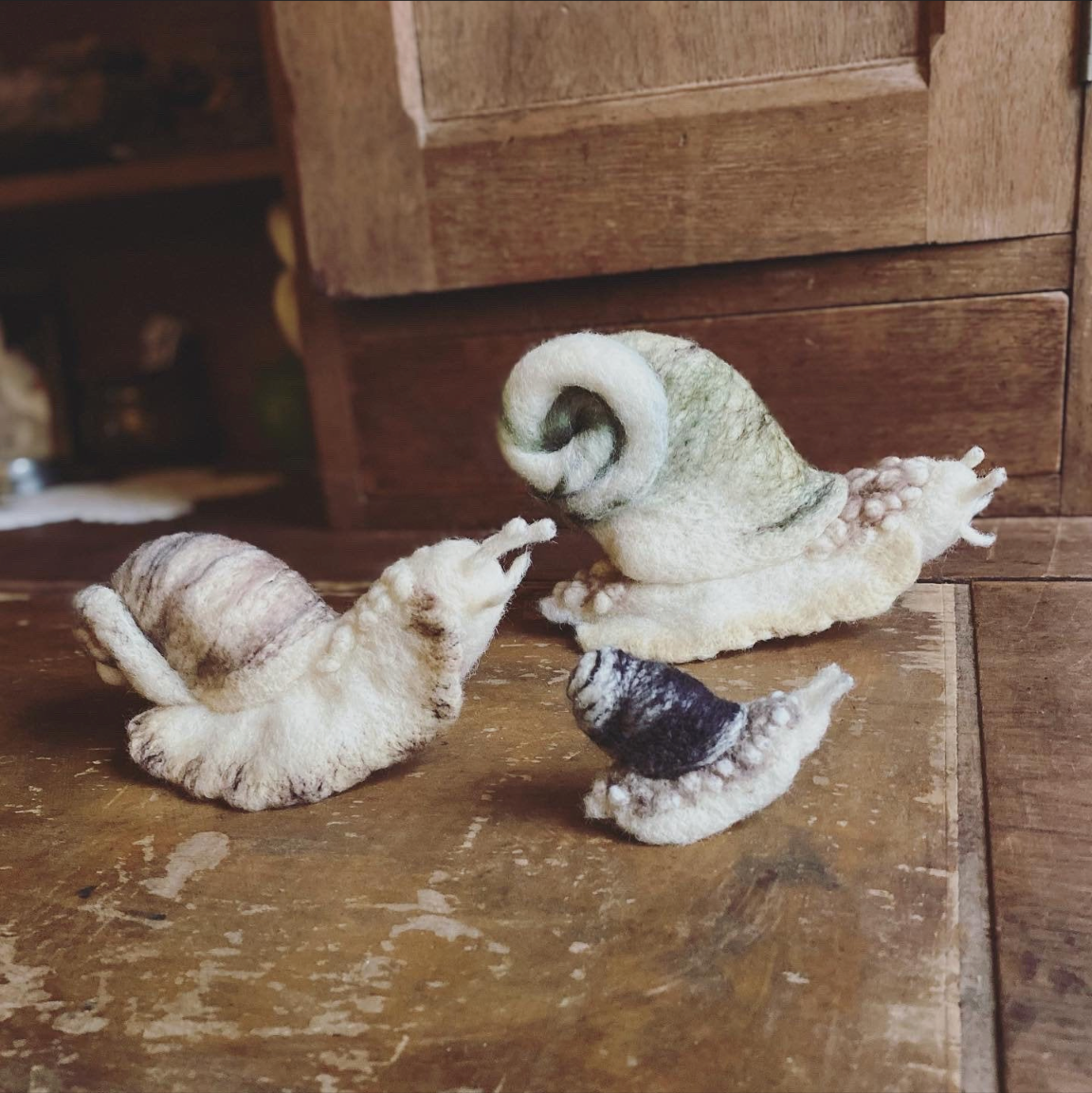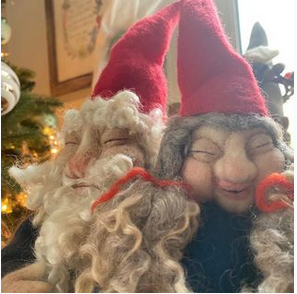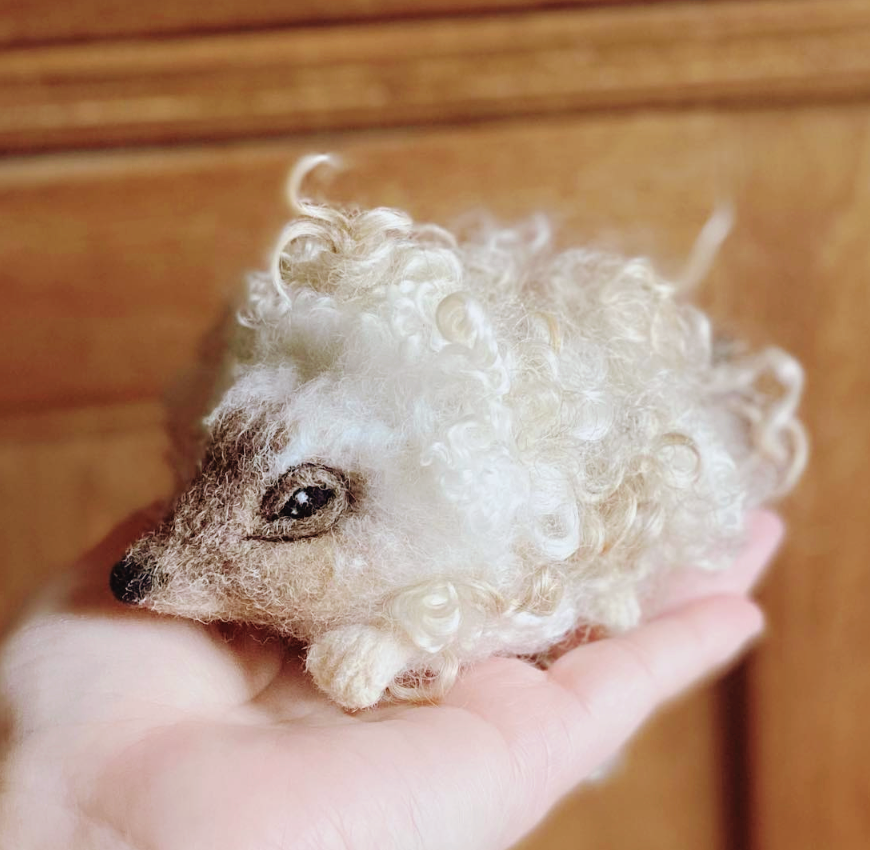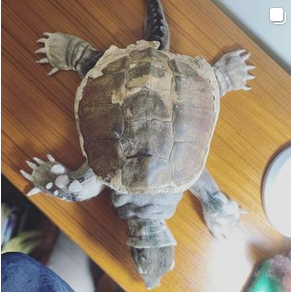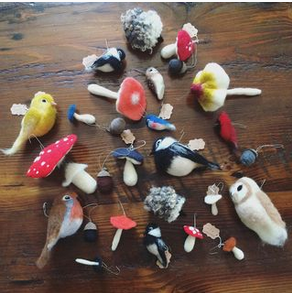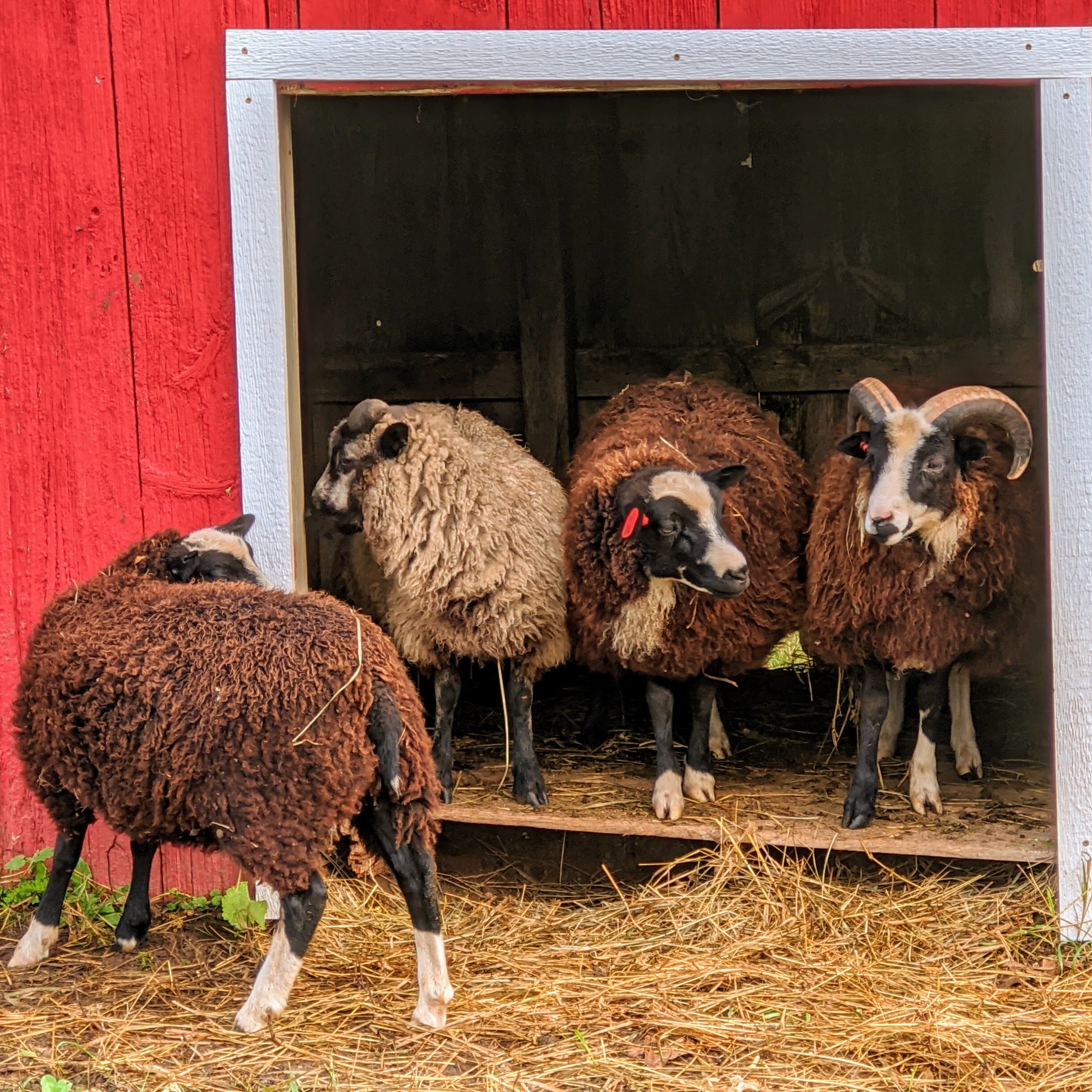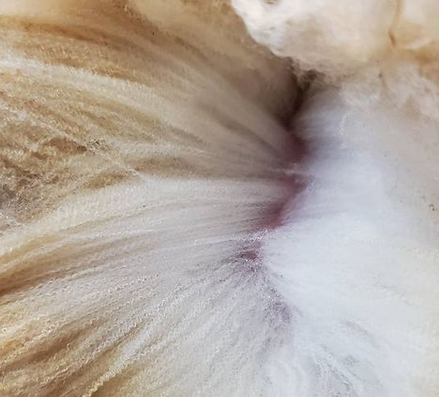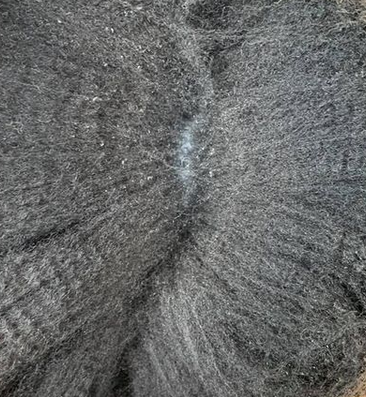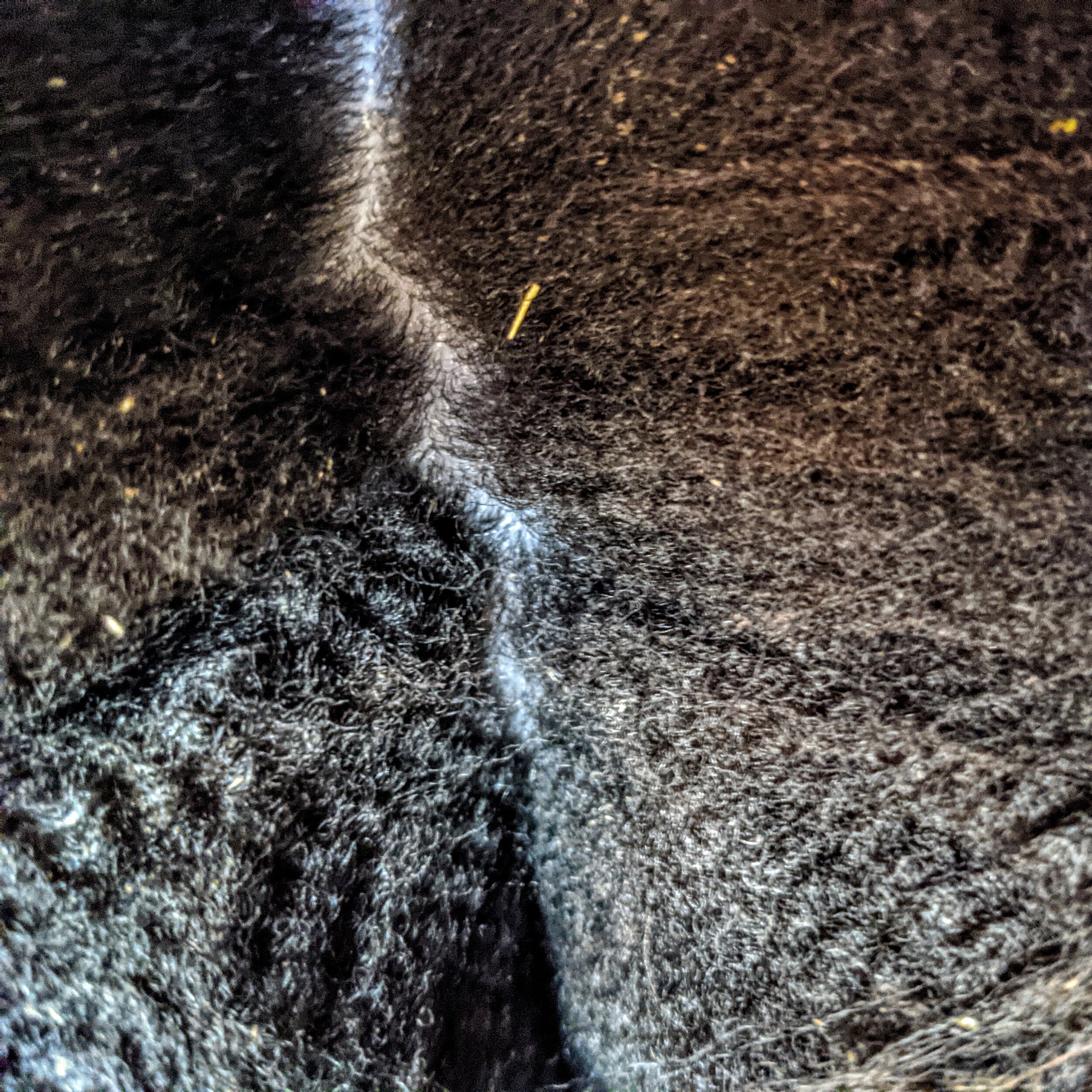Where does the fleece go?
We have been on Brown Dog Farm for four years now and this spring will be going on our 5th season. We have been caring for and raising fiber animals, Angora goats, sheep, and a llama. All these animals turn grass into fiber that can be used for crafts, clothing and textiles. We shear our animals at least once a year, the goats twice, so over the last four years, the fleeces are stacking up. Here is the story of where they all go.
The mohair fiber I am processing into natural colored yarn on my small spinning wheel. First, I card, which is a way of cleaning and lining up the fibers parallel to each other. When I card, I make small packages of fiber called rolags. When I have a big bag of them, I spin them into yarn. This is called a single. I will wash this and hang it to ‘set’ the twist. Once I have 2 singles, I ply them, which is spinning them together to become 2-ply yarn. This is a nice weight to knit. I am saving this right now for a large project for my home. My first spinning I will use to make an afghan for my living room. I am sharing with my mom for her to use for knitting projects also. As I get better at spinning, I will have this yarn for sale. I am also going to dye this mohair with natural dye plants I grow in my garden. Mohair takes dye especially well and I cannot wait to see how it turns out. With two shearings, a year I should be able to have enough offer on our webstore.
The sheep fleeces are processed in a similar way. Different breeds produce different qualities of wool. Bella, our Lincoln Ewe, produced very curly white fleece. She was older and her fleece grew thick and had a good amount of lanolin. Lanolin is a natural occurring waxy substance produced by sheep to keep their wool soft, moisturized and guarded against outdoor elements. I processed a good deal of Bella’s fleeces and I have spun it into yarn and plied it with another colored mohair I made when I first learned to spin. I am making a vest out of it.
Some of her fleece inadvertently got felted, in the washing process. That means, it got agitated to much when I had it in the hot water, and it shrunk into a mat. That did not go to waste though. It led to a new correspondence with a fiber artist named Alison Maxwell.
Alison Maxwell is a fiber artist living and working in Maryland. Her work is influenced by nature and she creates fanciful felted animals. She and I both love the work of Beatrix Potter.
Felting is simply the art of making 3-D items using wool locks or roving into fabric. You can do this by connecting the fibers in the wool in a way that makes a solid surface. Individual wool fibers have scales and when poked together repeatedly with a needle they bind to each other. Allison uses this dry felting technique to create 3-D wool sculptures. I shipped a box of felted locks of Bella’s last shearing. Alison agreed to let me interview her, so you might see how a fiber artist works with raw fleece.
Rachel: How did you first learn about felting?
Alison: I first learned about wet felting while getting my Art degree at Indiana University of Pennsylvania. (1999-2003) I majored in Fiber art after my first year. I fell in love with all the possibilities within fibers. I did not discover needle felting until 2016, after seeing another fiber artist create such life like creatures using only wool and barbed needles. I thought that I could teach myself this new medium, and I did. It took a few years to learn what works best for me and my abilities, but I am always learning through trial and error and with every creation I make.
Rachel: What inspires your work?
Alison: I get my ideas from a variety of avenues, but mostly from my own state of Maryland. I reside in Essex, where the wildlife varies from woodland creatures such as foxes and deer to Bay animals, like herons and crabs. I love nature and where I live, so it’s easy to be inspired right in my own backyard.
Rachel: What kind of work/studio space do you need for felting?
Alison: Luckily, I do not require a huge workspace to do needle felting. I just need a space large enough to set my wool, needles, and base upon. My workspace is usually a little chaotic. I tend to reorganize every few months, but it never takes long for the space to become disheveled again.
Rachel: What is your favorite kind of fiber to work with?
Alison: I adore sheep locks. The varying gradation of colors are always so beautiful. I use these locks mostly for my gnomes (their hair and beards), but also for my hedgehogs.
Rachel: What will you use the Bella fleece for?
Alison: I have not used the “Bella” wool just yet, but I hope to use the locks for gnomes or even a sheep.
Rachel: Where can folks find you and your work?
Alison: People can view/purchase my creations in my Etsy shop ( www.etsy.com/shop/feltupgirl) or if you’re local to Maryland, there are several small businesses that carry one-of-a-kind creations.
The Nest on Main Bel Air (Bel Air, MD)
Taken (Towson, MD)
Its Neighbor Made (Catonsville, MD)
I also will safely do events this year, all depending on safety and COVID restrictions.
You can also follow Alison on Instagram @feltupgirl. She has a beautiful feed and you can keep up on what she is working on.
Alison’s home/studio was featured in Baltimore Magazine this month!
Soon we will be shearing our small flock of Shetlands. Shetland wool is so soft and springy. We have a range of colors from light grey through to blackest black. I will be taking samples soon to send off to Texas A& M for micron testing. I will test these sheep yearly so I can know exactly what kind of fleece they are producing and match the fleece to the product use. Finer fleece has a softer feel and is delicate, for scarfs or shawls, coarser fleece is sturdier and stronger, for outerwear like hats and gloves. I can track which animals have the qualities I am looking for by testing their fleece. Then I will process them according to what I need and can provide for customers.
So that’s where the fleece goes after it’s left the sheep or goat.
What I find so satisfying as a producer, is seeing the connections that form when you send your products out into the world. These animals help us steward our land. They provide environmental services for our pastures, help build living soil, and connect us to other artists and makers.
I will keep you updated as we continue our fiber story. Let me know if you would like some!
And now ..back to waiting for LAMBS!!

